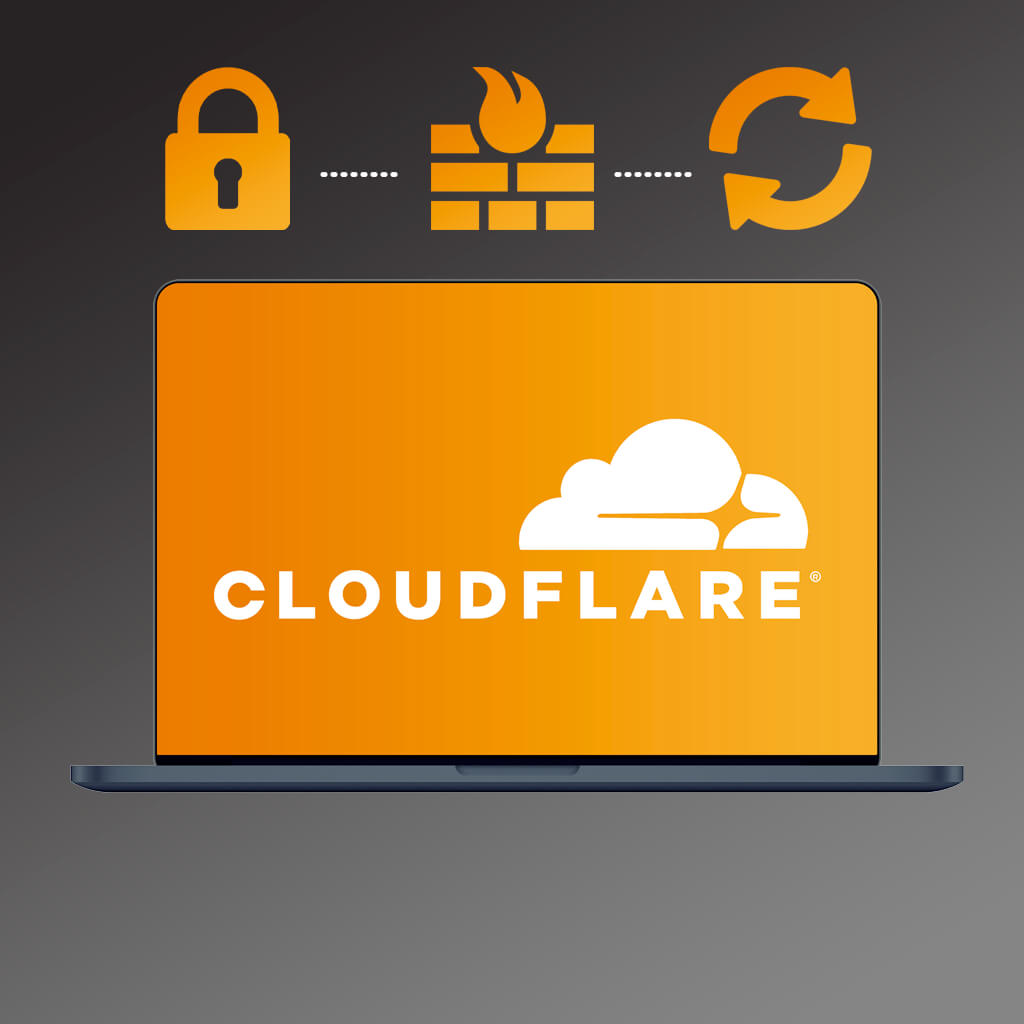
If you stumbled upon this article and have little to no knowledge of what CloudFlare even is, let’s start off with giving you a brief snapshot of what they provide in relation to the internet and then discuss some of it’s free features that can be deployed quickly to start complimenting your business website.
What is CloudFlare?
CloudFlare is one of the largest DNS hosting networks in existence today. It might get a little technical, but let’s look at what DNS is in a nutshell and how it works in relation to websites.
Whenever you do something with a domain name, like visit a website or send an email for example, DNS happens. There are lookups that take place and path the requests travel so that things can resolve and the whole internet can function. It’s not the only thing that is happening before you see a website, but it’s where things start.
Let’s move forward and break down the steps of loading your website.
When someone punches in your web address or clicks on a link to your website in the search engines, first some queries and requests need to take place before your website can actually be displayed. One of the very first initial requests to happen is looking up a set of nameservers and on those nameservers, a table of individual DNS records. These DNS records are what roadmaps out each request type and where they go or how they function on your domain name. This table of records is called a zone file.
This probably sounds confusing so far if you are new to DNS, but just understand that all these little checkpoints in DNS exist and that they happen in the shadows. In almost all cases a lot of this is set up for you automatically when you buy a domain.
After the zone file is loaded, the internet provider now knows where to look for the website and begins asking the hosting provider for the files to display. Lastly, after all the website files are loaded, your client should be staring at a beautiful RYNO built website .. one can hope!
Now that you have an idea of where DNS happens and what it does, you can probably get the understanding on how important it is that we use the right company in the middle to handle those requests. CloudFlare offers several features that fit into this area. Let’s discuss them now.
Super Fast DNS Hosting
CloudFlare is the fastest at the time of writing this article in response times to DNS queries. It on average responds at 12.35ms (yes milliseconds.. and yes, search engines care about those).
Some other common DNS providers for comparison sake:
- Linode 34.86ms
- NameCheap 38.01ms
- GoDaddy 40.91ms
- Rackspace 89.38ms
Multiply those savings across the many different requests that are hitting your server on a single visit and they can add up to big savings in load times.
Content Delivery Network / Caching Layer
During the process of loading the website, CloudFlare takes the data being transferred through it’s network and caches it across throughout their systems. Their system is a network of different nodes that spans the entire world. Each node provides a “as close as possible” cached copy for the internet service provider to load.
Chances are the node is going to be closer to your client than the web hosting provider, so again time saving and just another area to shave off some precious milliseconds.
Custom Firewall Rules
Whether it be your website’s code, the contact forms, the login page, or the server it the website files reside on, you can bet your hard earned money on the fact that throughout any given day one of the above, if not all, are being penetration tested by robots multiple times. This is why it’s important to check the traffic prior to it being able to reach your server.
With CloudFlare’s firewall rules, you can deploy up to 5 rules for free without having to upgrade. These firewall rules scan the request coming in and either challenge the user to a puzzle/captcha based on the configurations you have set. This can help confirm the user is legitimately human or even block them off completely based on their location in the world.
User Experience
In conclusion, the top priority for a website owner in my opinion has and always will be user experience. Google has been pushing a lot of algorithm updates focused around user experience lately and I believe putting CloudFlare in the mix should help offer a better experience with little effort. There is no reason you should opt to no have added layers of security and faster loading pages.
It’s a win win from the Technical SEO guy at RYNO.